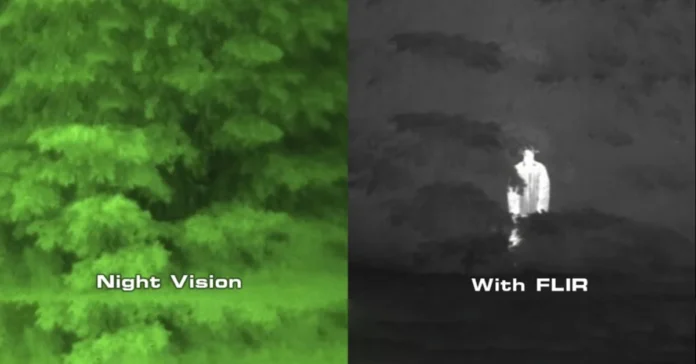In today’s increasingly complex world, safeguarding property, assets, and people is more important than ever. While most surveillance cameras perform well under daylight conditions, challenges arise when darkness falls. That’s where thermal imaging and night vision cameras come into play. These two technologies are designed to extend visibility into low-light and no-light environments, but they do so in drastically different ways.
Understanding the differences between thermal imaging and night vision is crucial when selecting the right solution for your security needs. Whether protecting a business facility, managing perimeter security, or keeping an eye on remote property, knowing which technology fits your specific scenario can save you time, money, and frustration.
This article deeply explores both technologies, highlighting how they work, where they shine, and which applications suit each best. Let’s explore what sets thermal imaging and night vision apart and help you decide which one is best for your surveillance goals.
What is Night Vision and How Does It Work?
Night vision cameras use infrared (IR) illumination to enhance visibility in darkness. Most commercial-grade night vision cameras rely on near-infrared light (NIR), invisible to the human eye but detectable by IR sensors. The IR light reflects off objects in the camera’s field of view, and the reflected light is converted into a visible image.
There are two main types of night vision systems:
- Active Infrared Night Vision: These cameras have built-in IR illuminators that light up the scene invisibly, helping the sensor “see” in total darkness. Most modern CCTV systems use this approach.
- Low-Light (Starlight) Night Vision: These cameras are incredibly sensitive to ambient light and can produce clear images in near-darkness without IR illuminators, often using starlight, moonlight, or other minimal sources.
Night Vision Pros:
- High-definition imaging in low-light areas.
- Cost-effective and widely available.
- Real-time surveillance with little to no lag.
- Compatible with most traditional CCTV systems.
Night Vision Cons:
- IR illumination has a limited range (usually 30-100 feet).
- Performance declines in fog, smoke, or extreme weather.
- Requires some ambient light or built-in IR to function.
What is Thermal Imaging and How Does It Work?
Unlike night vision, thermal imaging cameras detect heat, not light. All objects emit infrared radiation as heat, and thermal cameras visualize these differences in temperature. Warm objects like humans or animals stand out brightly against cooler backgrounds, making them easy to detect, even in total darkness.
Because thermal imaging doesn’t rely on visible or reflected IR light, it works in complete darkness and through visual obstructions such as smoke, fog, or dense foliage.
Thermal Imaging Pros:
- Detects heat signatures in total darkness.
- Works in all weather conditions—fog, rain, and smoke.
- Longer range detection (up to hundreds of meters).
- Excellent for perimeter security and wildlife monitoring.
Thermal Imaging Cons:
- Higher cost than standard night vision systems.
- Lacks facial recognition or license plate clarity.
- Not ideal for identifying fine visual details.
Use Cases for Night Vision Cameras
Night vision cameras are ideal for situations where clear, visible detail is desired, like reading license plates, recognizing faces, or recording video footage for identification purposes.
Best suited for:
- Residential surveillance.
- Office buildings and retail stores.
- Indoor security at night.
- Parking lots and driveways.
Because they mimic traditional video output with color or black-and-white detail (depending on lighting), night vision cameras work best in environments with controlled lighting or built-in IR LEDs.
Use Cases for Thermal Imaging Cameras
Thermal cameras shine in more extreme and tactical settings. Thermal imaging can offer unmatched detection if you’re dealing with large outdoor properties, low-visibility conditions, or environments with potential intrusions or wildlife threats.
Best suited for:
- Industrial perimeters and warehouses.
- Border security and remote facilities.
- Fire detection and equipment monitoring.
- Search and rescue operations.
Thermal imaging can also play a crucial role in early threat detection, spotting people hiding behind foliage or camouflaged in shadows where regular night vision would fail.
Cost Comparison: Is the Investment Worth It?
While night vision systems are generally more affordable and easy to integrate into existing CCTV setups, thermal imaging is a more significant investment and delivers unique capabilities.
A typical night vision camera may cost $100 to $500, while thermal imaging units, depending on range and resolution, can start at $1,500 and exceed $10,000. However, thermal imaging can quickly justify its cost for critical infrastructure or high-value assets by preventing a single intrusion or operational failure.
Professional Insight: Why Installation Matters
Professional installation makes a significant difference, no matter which type of camera you choose. Many businesses make the mistake of installing the wrong type of system or placing cameras in ineffective positions. Surveillance design requires understanding the field of view, potential blind spots, lighting conditions, and motion detection zones.
Professional installers evaluate your property and create a custom system that blends thermal and night vision technology if needed, giving you layered security that adapts to different risks.
Hybrid Solutions: The Best of Both Worlds?
Some modern surveillance systems combine both thermal and night vision in one unit. These hybrid cameras use thermal detection to alert operators of movement and then switch to HD night vision for detailed viewing or recording. While these cameras come at a higher price point, they offer a compelling, versatile option for high-security environments.
A mixed system may be the most effective long-term solution if your property faces threats at varying distances or in diverse weather conditions.
Conclusion
For property owners or businesses comparing thermal imaging and night vision technologies, the final decision depends on visibility needs, environmental conditions, and the level of detail required. Thermal cameras provide superior detection capabilities in total darkness, harsh weather, or large open areas. On the other hand, night vision captures more transparent, detailed images in low-light settings where identifying people or objects is critical. Both are powerful tools in modern surveillance, and understanding their strengths can help you design a system that works effectively, day or night.
Recognized as one of the most trusted names in the security industry, HD Cameras USA delivers advanced surveillance solutions tailored to both commercial and residential needs. Their comprehensive services include professional-grade camera installations, access control systems, intrusion alarms, and remote monitoring technologies. With primary locations in Orlando, Tampa, and Miami, along with satellite offices in Fort Lauderdale, Jacksonville, Lakeland, Daytona, West Palm Beach, and Apopka, they are strategically positioned to serve clients across Florida with speed, efficiency, and expertise. Many property owners and companies turn to them for reliable cctv installation fort lauderdale to secure both exterior and interior zones. Additionally, their experienced team provides dependable security camera installation jacksonville fl, helping clients deploy effective systems that deliver high-definition footage and real-time alerts.
HD Cameras USA proudly serves its commitment to customer satisfaction, technical excellence, and innovative solutions, making it a preferred choice for those seeking quality and peace of mind. Whether you’re looking to install thermal cameras, night vision systems, or a hybrid setup, partnering with HD Cameras USA ensures your security needs are met with precision, professionalism, and long-term support.



